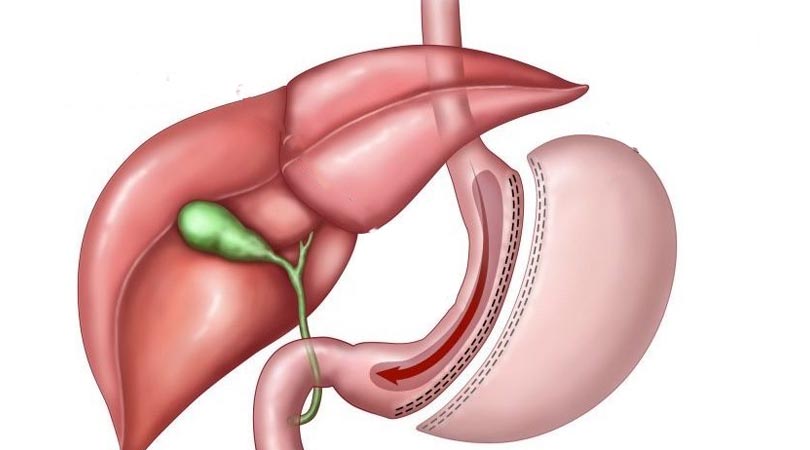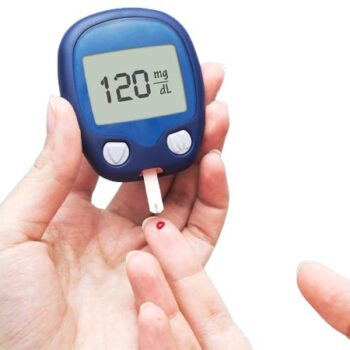What Is Gastric Sleeve Surgery?
Gastric sleeve surgery is one of the operations used as the last option in the treatment of obesity today. In gastric sleeve surgery approximately 80% of the stomachs of obesity patients are removed and the food intake of the stomach is restricted. This allows patients to lose weight. With sleeve gastrectomy, which is a safe and comfortable operation, 40-50 or even 60 kilos can be lost in some patients. Gastric sleeve surgery or gastric reduction surgery is a safe operation performed with a laparoscopic, that is, a closed surgical technique.


Why Is Gastric Sleeve Surgery Needed?
Obesity, which is one of the increasing health problems today, is a health problem that lowers the living standard of people and in some cases it can be life-threatening. Although sports and diet are necessary to leave obesity behind, in some cases it may not be enough to change the lifestyle. Especially in the advanced stages of obesity, which we call morbid obesity, obesity brings with it visceral fat, tissue damage, diabetes, cholesterol and even heart diseases. In such a case, patients need to lose weight faster but in a healthy way. Gastric sleeve surgery is one of the operations applied in these cases.
How Is Gastric Sleeve Surgery Done?
Gastric sleeve surgery, also known as stomach reduction surgery, is an operation performed with a closed technique. Although the operation is completed in an average of 2 hours, in some patients, the duration may be a little longer depending on the course of the operation. The purpose of sleeve gastrectomy, which is a safe and comfortable operation, is restricting the food intake of patients and thus enabling them to lose weight. Therefore, in sleeve gastrectomy surgery, the intervention is directly to the stomach. Approximately 80% of the stomach is surgically removed and the stomach is reduced. Thus, the person has to restrict their food intake and then weight loss begins.
Gastric sleeve surgery is a procedure performed under general anesthesia. The risk of complications is low due to the closed method. Gastric sleeve gastrectomy surgery can be performed through five holes or one hole with a diameter of one cm. After these incisions are made, the camera and the surgical instruments required for the surgery are inserted through the holes and the operation begins. 80 % of the stomach is removed. After this, stomach is cut, a suture line is created, if no adverse situation is detected, the tube sent at the beginning of the operation is removed, the drain system is inserted and the operation is completed.
How Should The Gastric Sleeve Surgery Preparation Process Be?
Gastric sleeve surgery is a comfortable and reliable operation, but it requires a preparation process. First of all, some examinations are performed on our patients who apply to us for this surgery. These examinations include measurement of body mass index, blood levels, presence of infection in the body, EKG and lung graph. Although our patients have shared their medical history with us in the consultation examination before the operation, before the operation, it must be checked again whether our patients are suitable for anesthesia or whether they have a medical condition that prevents the operation.
In this process, in addition to their medical history, if our patients are using blood thinners, they should stop them about 10 days before the operation, and if they have other regular medications, they should share them with us.
Who Are Suitable Candidates For Sleeve Gastrectomy Surgery?
All men and women who are over the age of 18 and have a body mass index over 40 who do not have a medical problem that prevents them from receiving anesthesia can have sleeve gastrectomy surgery. In addition, some patients have a body mass index of 35-40 and have type 2 diabetes due to obesity or those who have problems such as hypertension and sleep apnea can have sleeve gastrectomy surgery.
How Is The Gastric Sleeve Surgery Recovery Process?
Since the surgery performed with the laparoscopic (closed) method, the abdominal muscles and membranes are not damaged and serious pain does not occur. Although it varies from patient to patient, patients can stand up and walk a few hours after the operation. On the first day after the operation, changes and tension can be seen in the mood of the patients. Gas pain is another common side effect during the first month after the operation.
Since the operation is performed with a closed technique, patients can return to social life in a very short time after sleeve gastrectomy surgery. While the physical recovery is completed in an average of 1 month, our patients can prevent the possible gas pains we mentioned above by taking walks. The operation is a safe and comfortable procedure. Our patients can walk easily on the day of the surgery. Within the first 3 days of the procedure, a leak test is performed on our patients. Values are checked after the operation. If there is no problem afterwards, our patient is discharged.
What Are The Advantages Of Sleeve Gastrectomy Surgery?
Gastric sleeve surgery has many advantages. Our patients, who have to use many different drugs due to co-morbidities, leave these conditions behind to a large extent after sleeve gastrectomy surgery.
Gastric sleeve surgery is an operation that restricts food intake. Therefore, there is a serious weight loss, especially in the first year after the surgery, which means leaving behind the problem of fat in the organs and the liver problems that arise due to this. As our patients get rid of their excess weight, not only do the sugar levels in the blood, which we call the glucose ratio, are regulated, but they also leave behind diseases such as insulin resistance. Another advantage of sleeve gastrectomy surgery is that it is performed with a closed technique, thus allowing for a short recovery time.
Gastric sleeve surgery, which is effective in leaving obesity behind, is a reversible surgery.Unlike gastric bypass surgeries, these operations do not interfere with the intestines. Only part of the enlarged stomach is removed. Therefore, the digestive system continues to function as before.
What Are The Disadvantages Of Sleeve Gastrectomy Surgery?
As in every surgical operation, sleeve gastrectomy surgery also has some complication risks, but it can also have some disadvantages. The first of these is undoubtedly the process of getting used to the new diet after surgery. With sleeve gastrectomy surgery, a serious volume reduction is made in the stomach. This means changing the diet. This change is not just about consuming less food, but at the same time, the food should be thoroughly chewed and consumed in small bites. This new diet may force the patient who had many sleeve gastrectomy surgeries in the first place. Another disadvantage when it comes to sleeve gastrectomy surgery is the risk of leakage, which may occur in the first days after the operation. Although a leak test is performed after the new volume of the stomach, this risk remains in the first postoperative period.
If the correct diet is not followed, it is possible for the stomach to expand again over the years. As a result of such an enlargement, patients who have undergone sleeve gastrectomy may start to gain weight again. Weight regain may be higher in patients who have had sleeve gastrectomy surgery compared to patients who have had gastric bypass surgery. For this reason, it is necessary to pay attention to the diet at all times so that the stomach does not expand again.

 Nederland
Nederland Türkçe
Türkçe Français
Français






